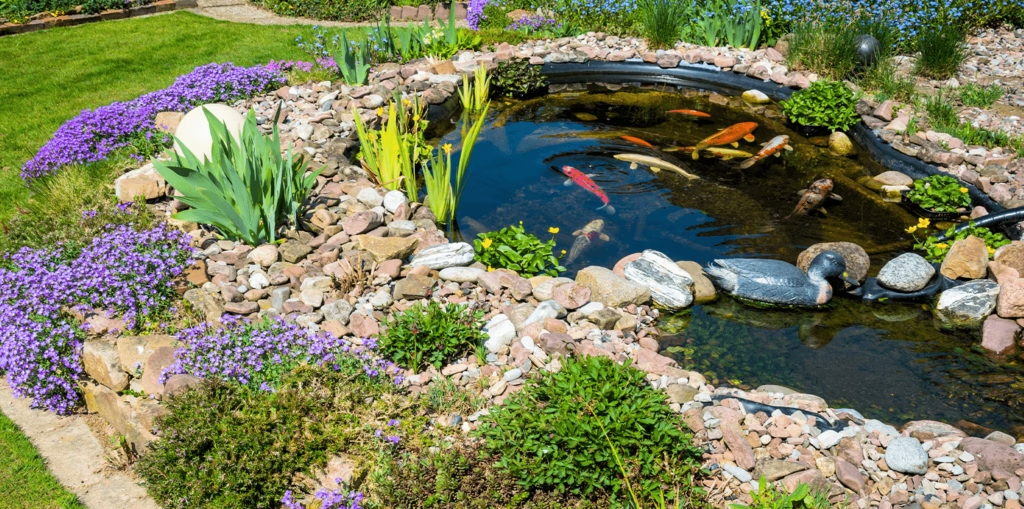Creating an outdoor oasis that resonates with tranquility often starts with the soothing sounds of water. When implemented thoughtfully, water features can significantly enhance your backyard, turning it into a retreat where you can unwind and reconnect with nature. This guide will explore the mental and physical benefits of water sounds, helping you select, install, and maintain the perfect water feature for your outdoor space. With insights rooted in research and practical tips, you’ll be equipped to design a harmonious environment that not only reduces noise but also elevates your garden’s aesthetic appeal.
Why Water Sounds Transform Your Backyard into a Retreat
The appeal of water sounds in your garden goes beyond simple preference; they can have a profound impact on your well-being. Studies indicate that the presence of water sounds, such as trickling, splashing, and bubbling, can lower stress levels and improve mood. Research has shown that water sounds deliver significant positive health outcomes, with an effect size of 2.01, emphasizing their calming influence.
Being near flowing water also enhances cognitive performance and provides a pleasant backdrop that masks unwanted noise from the surrounding environment. The sound of water aids in shifting your mental state, helping you recover from daily stressors. Marine biologist Wallace J. Nichols points out that our brains are wired to react positively to water, reinforcing this connection and its effects on our wellbeing.
Incorporating water features into your backyard not only nurtures your mental wellness but also fosters a communal atmosphere. These features can serve as gathering spots that invite friends and family to relax together.
Description: A beautiful koi pond in a serene garden setting, illustrating the calming effects of water features. (Source: Living Color Garden Center)
Choosing the Right Water Feature for Serenity
Selecting the most appropriate water feature is key to creating your desired serenity in the garden. There are several options to consider, including fountains, ponds, streams, and waterfalls. Each feature offers unique sounds and visuals that can enhance your outdoor experience.
Before making a decision, assess your available space, budget, and aesthetic preferences. For smaller areas, a wall-mounted fountain or a small pond can work well, while larger locations provide an opportunity for more elaborate installations like a waterfall or meandering stream.
Don’t forget to think about your ability to handle the installation yourself versus hiring a professional. DIY installations can save money, but they require careful planning and execution to avoid complications later on.
Water features often increase property value and enhance overall attractiveness. Dynamic elements, such as varying heights and flow rates, provide a rich auditory experience through a diverse sound palette. This variety ensures your oasis feels inviting and serene.
:strip_icc()/fountain-two-pots-fbb82a3f-32d50accb417487fb7bb033279cba401.jpg)
Description: An image illustrating different types of water features, including fountains and urns. (Source: Better Homes & Gardens)
DIY Installation and Maintenance Made Easy
Installing your water feature doesn’t have to be an intimidating task. With the right guidance, even beginners can successfully create their outdoor oasis. Start by gathering essential tools, such as shovels, levelers, and pumps, while ensuring you have the appropriate materials like stones and basins for your design.
Begin with step-by-step instructions tailored to your chosen feature. If you’re building a pond, focus on digging to the right depth and shaping it according to your planned aesthetic. For a fountain, ensure your pump is positioned optimally for water flow.
Routine maintenance is equally important to keep the peaceful ambiance intact. Regularly clear debris from the water surface and inspect your pump for blockages. Following these steps not only enhances the sound quality of your feature but also prolongs its life. Remember, a clean feature is a happy feature!

Description: A detailed diagram demonstrating how to build a DIY water feature. (Source: Family Handyman)
Soundscaping Techniques for Optimum Enjoyment
To fully harness the benefits of water sounds, employing soundscaping techniques is essential. These techniques can optimize your auditory experience, ensuring that the sounds produced align with your relaxation goals. For instance, strategically placing rocks or boulders in your water feature can change how water flows, creating richer sound textures.
Adjusting the flow rate of your water feature is another effective way to control sound levels. Higher flow rates generally produce louder sounds that effectively mask surrounding noise, which can be especially useful if you live in a busy area.
Moreover, incorporating aquatic plants enhances not only the aesthetics of your feature but also its sound absorption. By experimenting with different configurations, you can find the perfect blend of sound and sight that brings you peace in your outdoor space.

Description: Diagram showing how sound mapping works in relation to different types of water sounds. (Source: US Geological Survey)
Sustainability in Water Feature Design
Integrating sustainable practices into your water feature design benefits both the environment and your garden. Start by considering recirculating systems to conserve water effectively, drastically reducing dependency on fresh water supplies.
You might also think about integrating rainwater harvesting systems that can feed into your ponds or fountains, which will provide a continuous water source while minimizing runoff and pollution. Choosing native plant species around your water feature supports local wildlife and reduces ongoing maintenance efforts, providing both beauty and practicality to your garden.
Additionally, opting for renewable energy sources, like solar-powered pumps, promotes sustainability while ensuring your installation is eco-friendly. By focusing on these practices, you contribute to a healthier garden and planet while enjoying the calming effects of water sounds.
:strip_icc()/spout-fountain-wooden-wall2-7jfHFgcGKtXBei7geyOQ9P-8206db0a83294c19b4568207edf9a396.jpg)
Description: An eco-friendly water feature designed with sustainable materials and practices. (Source: Better Homes & Gardens)
Real-Life Case Studies of Success
Examining successful water feature implementations can inspire your own garden project. One notable example is the transformation of the Cheonggyecheon Stream in Seoul, which turned a covered highway into an 11-kilometer-long river, improving urban quality of life and promoting relaxation for visitors.
Another project to consider is the Bishan-Ang Mo Kio Park in Singapore, where a previously concrete canal was transformed into a naturalized river. This project incorporated biodiversity while enhancing community spaces. Looking at these case studies can provide useful insights into how water features can foster environmental health and community engagement, along with highlighting practical lessons for your backyard.

Description: A before-and-after image showcasing the transformation of an urban space with the addition of a water feature. (Source: Blynn Landscapes)
Acoustic Engineering: The Science Behind Water Sounds
Acoustic engineering is crucial for optimizing the sound quality of your water features. Understanding sound mapping and your space’s auditory zones can lead to a more serene atmosphere.
In water features, the combination of flow rate, surface area, and material choice significantly affects sound quality. For instance, higher water flows generally create more pronounced sounds, while gentler flows may emanate soothing trickles. By implementing these principles thoughtfully, you can enhance the acoustic experience of your outdoor oasis.
Moreover, utilizing advanced sound analysis equipment can assist in designing water features that masks ambient noise while ensuring a relaxing environment. With careful planning, you can create a harmonious soundscape perfectly suited to your natural surroundings.

Description: Visual representation of how sound waves interact with water features and their surroundings. (Source: Science News)
Your Journey to Crafting the Perfect Aural Oasis
Throughout this guide, you’ve explored various elements involved in creating a tranquil water feature to enhance your backyard. With insights on the psychological and physiological benefits of water sounds, practical installation tips, sound optimization techniques, and sustainable practices, you’re now ready to embark on your journey.
Remember to personalize your experience, considering not only the aesthetics but also how the sounds will enrich your life and provide a relaxing retreat. By integrating thoughtful design with ecological responsibility, your water feature will serve as both a visual centerpiece and a therapeutic soundscape that revitalizes your spirit.

Description: A stunning garden retreat that combines lush vegetation with tranquil water features. (Source: Natalie Gisborne)
With patience and creativity, the perfect aural oasis awaits you right in your backyard. Embrace the calming powers of water sounds and let your garden reflect the serenity you seek.

